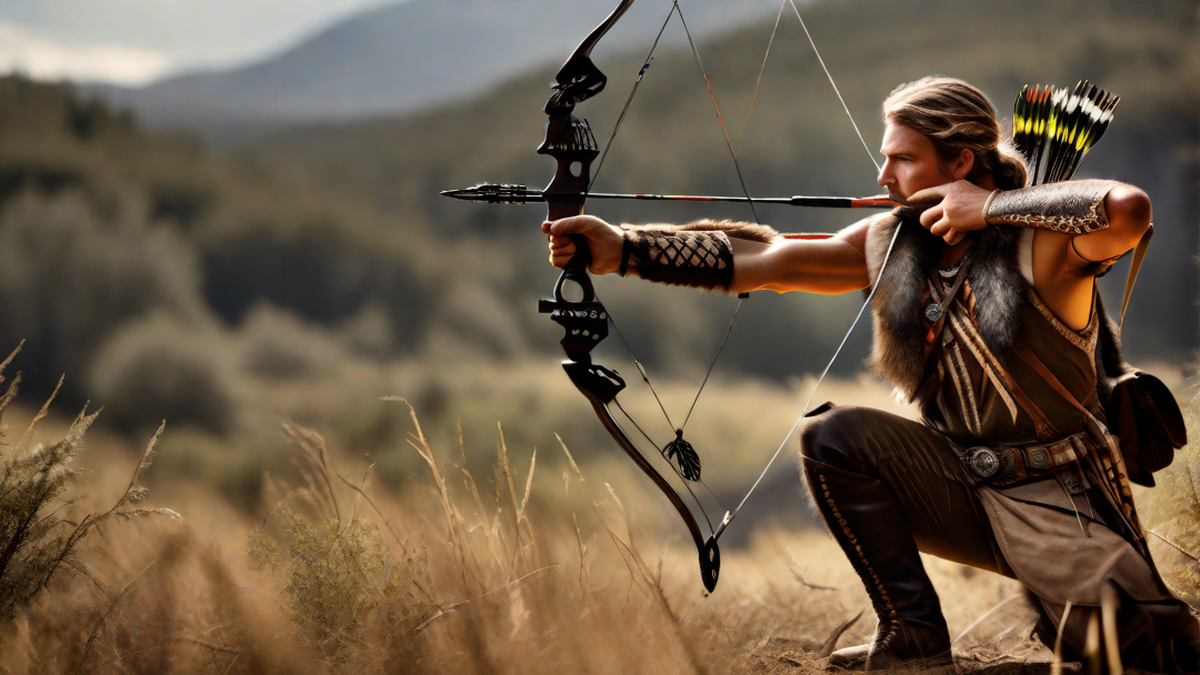Learning how to bow hunt can be an incredibly rewarding experience for outdoor enthusiasts like myself. The art of bow hunting requires patience, skill, and a deep connection with nature. In this article, I will share my personal journey and provide detailed steps on how to learn bow hunting.
Introduction to Bow Hunting
Bow hunting is an ancient practice that dates back thousands of years. It requires the use of a bow and arrow to hunt animals. Unlike firearms, bow hunting offers a more challenging and immersive experience. It allows for a closer connection with the environment and requires a deep understanding of animal behavior.
Before embarking on your bow hunting journey, it’s important to familiarize yourself with the local hunting laws and regulations. Obtain the necessary permits and licenses to ensure you are hunting legally and ethically. Additionally, consider taking a hunter education course to learn about safety protocols and ethical hunting practices.
Choosing the Right Bow
When it comes to bow hunting, selecting the right bow is crucial. There are different types of bows available, including compound bows, recurve bows, and longbows. Each type has its own advantages and disadvantages, and personal preference plays a significant role in the decision-making process.
I personally prefer compound bows for their versatility and accuracy. They feature a system of pulleys and cables that make drawing the bow easier and allow for higher arrow speeds. However, recurve bows and longbows have their own benefits, such as simplicity and a more traditional feel.
Visit a reputable archery shop and consult with knowledgeable staff to find a bow that suits your needs and preferences. Consider factors such as draw weight, draw length, and overall comfort. It’s important to choose a bow that you feel comfortable shooting for extended periods.
Mastering Archery Techniques
Before heading out into the field, it’s essential to develop strong archery skills. Practice regularly at an archery range or in a safe outdoor area. Start by focusing on the basics, such as proper stance, grip, and anchor point.
Work on your form and consistently practice drawing and releasing the bow. Pay attention to your breathing and aim for smooth, fluid movements. As you progress, gradually increase the draw weight on your bow to build strength and accuracy.
Consider seeking guidance from a professional archery coach or joining an archery club. They can provide valuable feedback, help refine your technique, and offer insight into advanced archery methods.
Scouting and Understanding Animal Behavior
Successful bow hunting requires a deep understanding of the behavior and patterns of the animals you intend to hunt. Spend time studying the habits, preferred habitats, and feeding patterns of your target game species.
Scouting is a critical step in bow hunting. Take the time to explore potential hunting locations and look for signs of animal activity, such as tracks, droppings, and bedding areas. Use trail cameras to monitor wildlife movement and gather valuable data.
Be patient and observant while in the field. Take note of wind direction, weather conditions, and the natural landscape. These factors can greatly impact your chances of a successful hunt.
Fieldcraft and Stealth
Being able to move silently and blend into your surroundings is essential for bow hunting success. Practice stealth techniques, such as walking quietly and avoiding unnecessary movements. Wear camouflage clothing that matches the environment and use scent control products to minimize your odor.
Additionally, consider setting up ground blinds or tree stands in strategic locations to increase your chances of getting within bow range of your target. These structures provide cover and concealment and can help you remain undetected by wary game animals.
Conclusion
Bow hunting is a challenging and rewarding pursuit that requires dedication and skill. Learning how to bow hunt is a journey that involves mastering archery techniques, understanding animal behavior, and developing fieldcraft skills. Remember to always hunt legally and ethically, respecting both the game animals and the environment. So, get out there, embrace the challenge, and create unforgettable memories in the great outdoors!
